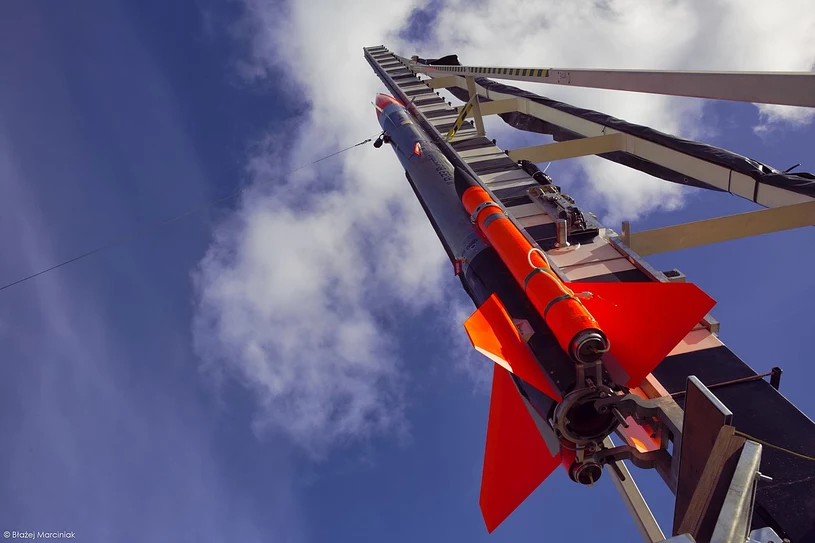In the rapidly advancing world of aerospace engineering, every gram and every second count. When the Łukasiewicz Research Network – Institute of Aviation embarked on the development of Poland’s ILR-33 Bursztyn suborbital rocket, they faced a key challenge: producing aerodynamic fairings for the rocket’s booster modules that were not only lightweight and durable, but also able to house sensitive electronics and sensors.
Conventional manufacturing methods fell short in meeting the project’s strict requirements for complexity, weight reduction, and rapid prototyping. That’s where OMNI3D’s industrial 3D printing technology stepped in.
The Challenge: Lightweight, Complex, and Deadline-Critical
The ILR-33 Bursztyn suborbital rocket required auxiliary fuel tank fairings that could:
- Protect internal systems from extreme vibration, heat, and pressure
- Provide aerodynamic efficiency during high-speed flight
- Integrate housings for sensors, cameras, and electronics
- Be delivered within a tight schedule
Traditional metal components would have added unnecessary weight and involved multi-step assembly processes that couldn’t keep pace with the project timeline.

The Solution: Advanced 3D Printing with Carbon-Reinforced Nylon
To overcome these challenges, the Institute of Aviation used the Omni TECH industrial printer and selected carbon-fiber-reinforced nylon (CF-PA-12) for its superior mechanical performance and ultra-low weight.
Key advantages of the 3D printed fairings:
- Weight reduction compared to aluminum or steel parts
- Integrated design eliminating the need for multiple joined components
- High thermal and structural resistance, ideal for aerospace use
- Rapid production and iteration, meeting time-critical goals
- Custom internal geometry to house electronics and sensors safely
The ability to print large, complex, mission-critical parts in-house allowed engineers to test, refine, and deploy faster than ever before.

The Results: Aerospace-Grade Performance, Delivered at Speed
By switching to industrial 3D printing with OMNI3D, the Institute of Aviation achieved:
✅ Significant weight reduction, boosting aerodynamic performance
✅ Shorter lead times and greater production flexibility
✅ Integrated features, reducing part count and potential failure points
✅ Reliable performance in extreme environmental conditions
This project underscores the strategic advantage of additive manufacturing in aerospace applications — where every millisecond of delay or extra gram of payload could affect mission success.
Push the Boundaries of Aerospace with OMNI3D
OMNI3D empowers aerospace engineers with large-format, high-performance 3D printing solutions. Whether you’re building rockets, drones, satellites, or structural components, our technology enables lightweight, complex, and production-ready parts with unmatched speed and precision.
Ready for takeoff?
👉 Let’s talk


